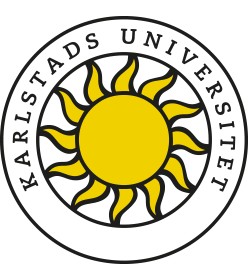Computational and solution chemistry
15.0 ECTS creditsInstruction is in the form of lectures, exercises, laboratory sessions, and seminars. Some parts may be in the form of video recordings. Some components are based on self-study, and it is important for students to be able to read and understand course literature in English.
The course comprises two integrated and parallel parts: computational chemistry and solution chemistry.
The computational chemistry component, which makes up half the course, includes a computational theory module and a project module, assessed separately.
The computational theory module covers the following:
The solution chemistry component, which makes up half the course, includes a solution theory module (4 weeks of full-time study) and a laboratory module (4 weeks of full-time study), assessed separately.
The solution theory module covers the following:
For the project module and the laboratory module, students have to submit all reports and protocols within three weeks after the end of the course in order to receive their results the current semester. Reports and protocols submitted later will be examined as time permits, but no later than the following semester.
The course comprises two integrated and parallel parts: computational chemistry and solution chemistry.
The computational chemistry component, which makes up half the course, includes a computational theory module and a project module, assessed separately.
The computational theory module covers the following:
- basic concepts in computational chemistry, for instance models, data structure, and coordinate types,
- brief introduction to quantum mechanics,
- Hartree-Fock theory (limited and unlimited),
- electron correlation and post-Hartree-Fock methods (CI, MPx, CC, CASSCF),
- DFT (Density Functional Theory),
- molecular properties, including potential energy surfaces, electron density, spin density, dipole moments, electrostatic potential, atomic charges, molecular orbitals and electronic transitions (UV/vis spectroscopy), vibration analysis (IR spectroscopy) and NMR spectroscopy,
- introduction to molecular mechanics and force fields,
- energy minimisation and potential energy surfaces
- introduction to simulation methods (Molecular Dynamics and Monte Carlo), and
- inclusion of solvent effects in computational chemistry.
- introduction to computational chemistry software,
- computational exercises (for instance conformation analysis, thermodynamic analysis of reactions, transition structures, kinetic analysis, spectroscopy, and molecular properties), and
- a project assignment about a selected research problem in computational chemistry.
The solution chemistry component, which makes up half the course, includes a solution theory module (4 weeks of full-time study) and a laboratory module (4 weeks of full-time study), assessed separately.
The solution theory module covers the following:
- interactions between solvent and dissolved substance,
- classification of solvents,
- solvent effects on chemical equilibrium and reaction rates,
- solvent effects on the spectroscopy of organic substances,
- solvent polarity, and
- solvents and "green chemistry".
For the project module and the laboratory module, students have to submit all reports and protocols within three weeks after the end of the course in order to receive their results the current semester. Reports and protocols submitted later will be examined as time permits, but no later than the following semester.
Progressive specialisation:
A1N (has only first‐cycle course/s as entry requirements)
Education level:
Master's level
Admission requirements:
A degree of Bachelor in Chemistry, or registered for 90 ECTS credits in Chemistry with at least 75 ECTS credits completed, and upper secondary level Swedish 3 or Swedish as a second language 3 and English 6, or equivalent
Selection:
Selection is usually based on your grade point average from upper secondary school or the number of credit points from previous university studies, or both.
Course code:
KEAE10
The course is not included in the course offerings for the next period.
